Right now, travel might seem a little complicated—but things are looking up for the remainder of 2021 and as we move into 2022. While things may not go back to normal anytime soon, the Extraordinary Journeys team and our clients have been traveling during the pandemic to places that are open to travel. We’re seeing, and experiencing first-hand how things are going in some of our favorite destinations across the globe. And that’s exactly why we’re here for you as travel specialists, to take any of the grunt and guesswork out of planning travel during these uncertain times with all the shifting and changing happening with countries opening, closing, and travel restrictions. Booking with one of our specialists means we’ve got your COVID-19 tests, restrictions, changes in entry requirements, visas, flights, accommodation, activities, and backup plans covered. We’re there to guide you through it all, and someone on call to answer any questions or concerns, 24/7.
Some may say travel during the pandemic is irresponsible or unsafe, but there are two ways to look at everything—the tourism industry employs more than 98 million people directly, representing over three percent of all employment. Travel truly makes the world go round—provides jobs, education, and wonder. The bottom line is that travel supports the economy, especially in places that are heavily reliant on tourism. The following countries are open for visitors, have health and safety protocols in place including testing and cleaning, and they are destinations we’re confident sending our clients to, thanks to first-hand experience traveling there before and during the pandemic. Call us opportunists, but they’re also less crowded than ever before, and if that’s not a reason to travel to some places that are usually overcrowded, we don’t know what is. After a year of canceled trips and days spent daydreaming about where we’d travel in the future, we think 2022 is the year of planning those big, bucket-list, once-in-a-lifetime trips. Those trips that usually require years of planning, research, and choosing the perfect timing, but right now can be planned with the guidance of with our specialists.
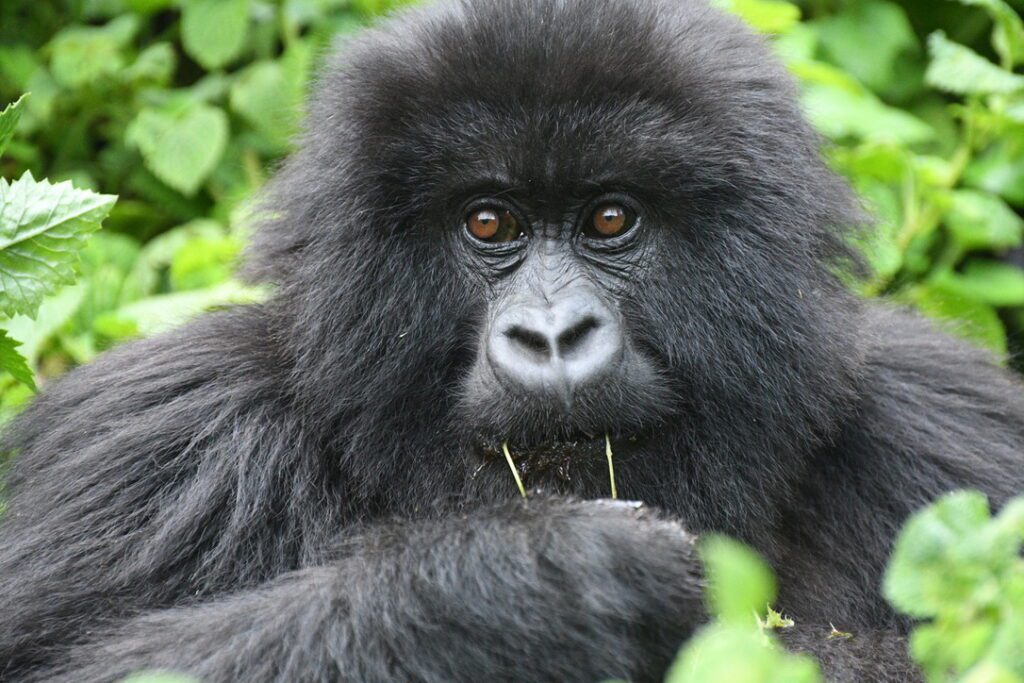
1) Rwanda: Gorilla, Chimp and Monkey Trekking
There’s something so special about traveling to Rwanda—maybe it’s trekking to the incredible endangered mountain gorillas surrounded by the towering majestic Virunga volcano range in Volcanoes National Park. Maybe it’s spotting Colobus monkeys or tracking chimpanzees in Nyungwe National Park, one of the oldest rainforests in Africa. Possibly it’s kayaking on the peaceful waters of Lake Kivu at sunrise while Pied Kingfishers dive around you, or watching the sun set over the terraced tea fields throughout the beautiful country. Or, coming face to face with elephants, giraffes, and lions in Akagera National Park without another safari vehicle in sight. The thriving art, fashion, and culinary scenes in Kigali that’s not to be missed. Above all, we think in the land of 1000 hills and a million smiles, it’s the people that make it so special here. Rwanda is always a good idea—but especially right now while the crowds are low, some of our favorite properties have rooms that don’t need to be booked a year in advance as they usually do.
In 2018, the tourism sector in Rwanda contributed 14.9 per cent of the country’s GDP—so you bet they are thrilled to be welcoming visitors back to explore. Travel during the pandemic in Rwanda is safe and straightforward. Safety measures include a requirement for two negative COVID-19 test results, one up to five days (120 hours) before departure and one upon arrival to the airport in Kigali. A printed hotel booking confirmation and passenger locator form are also required upon arrival in Kigali. Tourists are then expected to quarantine in their hotel until they receive the results, which could take up to 24 hours, but usually around six to 12 hours. This is the perfect time to catch up on sleep, or spend some time learning about Rwanda’s history and gain some context before stepping into the city. We highly recommend picking up a copy of Stephen Kinzer’s A Thousand Hills, a biography of Rwanda’s current president Paul Kagame or Josh Ruxian’s story (co-owner of The Retreat Hotel and Heaven Restaurant in Kigali) A Thousand Hills to Heaven, an inspiring memoir of healing a Rwandan village, raising a family near the old killing fields, and building a restaurant named Heaven.
Visitors wishing to explore one of Rwanda’s four national parks must register in advance and obtain a negative COVID-19 test 72 hours before entering. Each traveler is assigned an ID number and unique QR code that tracks their health throughout their stay. Temperature checks and squirts of sanitizer are required to enter just about every establishment and park entry. Mask wearing, even outdoors, is mandatory.
Some extra protocols are in place to protect Rwanda’s mountain gorilla population in Volcanoes National Park—just under half of the world’s population of approximately 1,000 mountain gorillas lives in the range which spans Rwanda, Uganda, and the Democratic Republic of Congo. Before your trek you need a COVID-19 test valid within 72 hours of entering the park, social distancing is enforced, as is fresh surgical mask-wearing within the vicinity of the gorilla habitats. Trekking groups are restricted to six, rather than the usual eight, and keeping back 10 meters from the gorillas in mandatory (although, we all know you can’t control a gorilla if they want to get closer to you).
Normally, we’d advise our clients to book trekking permits and accommodation months—even a year—in advance. But right now with so few travellers in the region, there’s never been a better time to book a trek and stay at some of our favorite properties.
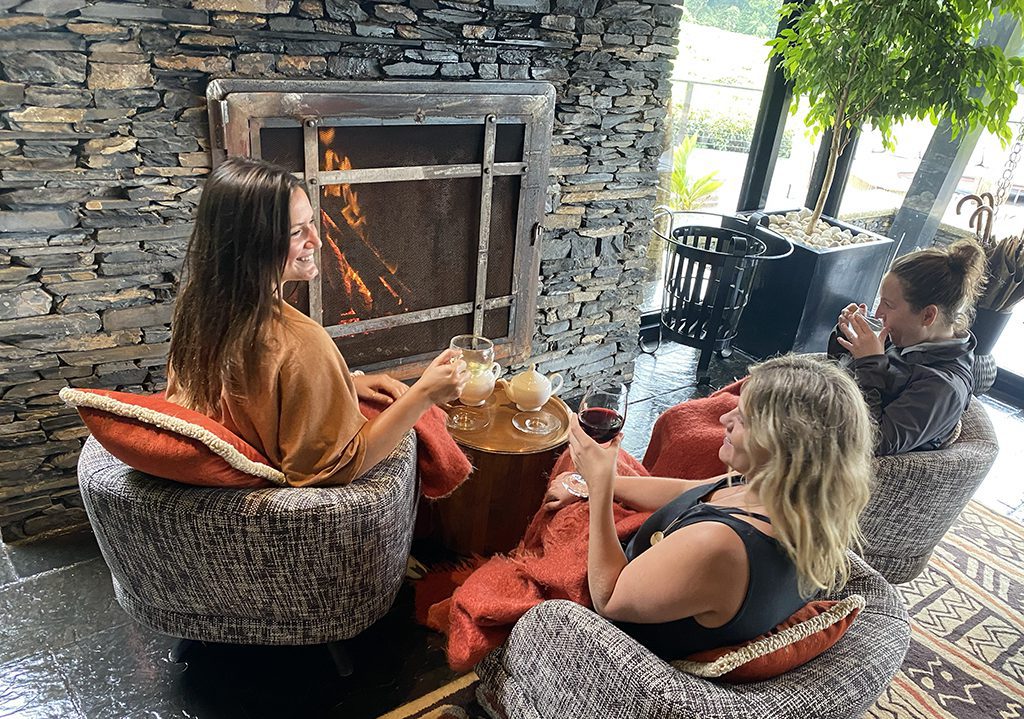
Our favorite places to stay in Rwanda:
The Retreat By Heaven: There’s no better place we could imagine checking into after the long journey to Kigali and spending six to 12 hours quarantined in a room. The rooms have outdoor showers with locally-made products and private terraces where you’ll hear birds joyfully chirping, feel the sun shining on your face, and some of the best food in the city which you can enjoy in your room from their two on-site restaurants, Heaven and Fusion. Once you’re free of quarantine, there’s a yoga and meditation room, spa, large heated saltwater swimming pool with jacuzzi and diving rocks, and an open-air fitness center.
Bisate Lodge: Nestled into a naturally formed amphitheater with spectacular views of the Bisoke, Karisimbi, and Mikeno Volcanoes in Rwanda, Bisate Lodge is a wilderness lover’s dream. Built in the style of Rwanda’s royal palaces, Bisate is centered on a vision of sustainability, conservation, and wildlife protection, the property spans 66,700 acres with only six luxurious guest villas onsite.
One&Only Gorillas Nest Hotel: One&Only Gorillas Nest is situated in a lush forest grove right in the foothills of the Volcanoes National Park. Your focus in this area is on creating the opportunity for a once-in-a-lifetime rare personal encounter with a majestic mountain gorilla.
Singita Kwitonda Lodge: One and Only Nyungwe House is the most luxurious option for travelers wanting to visit Nyungwe National Park, a close-canopy rainforest 150 miles west of Kigali known for its 13 species of primates, including chimpanzees. One and Only Nyungwe House is located on a tea plantation on the edge of Nyungwe Forest.
Suggested Itineraries:
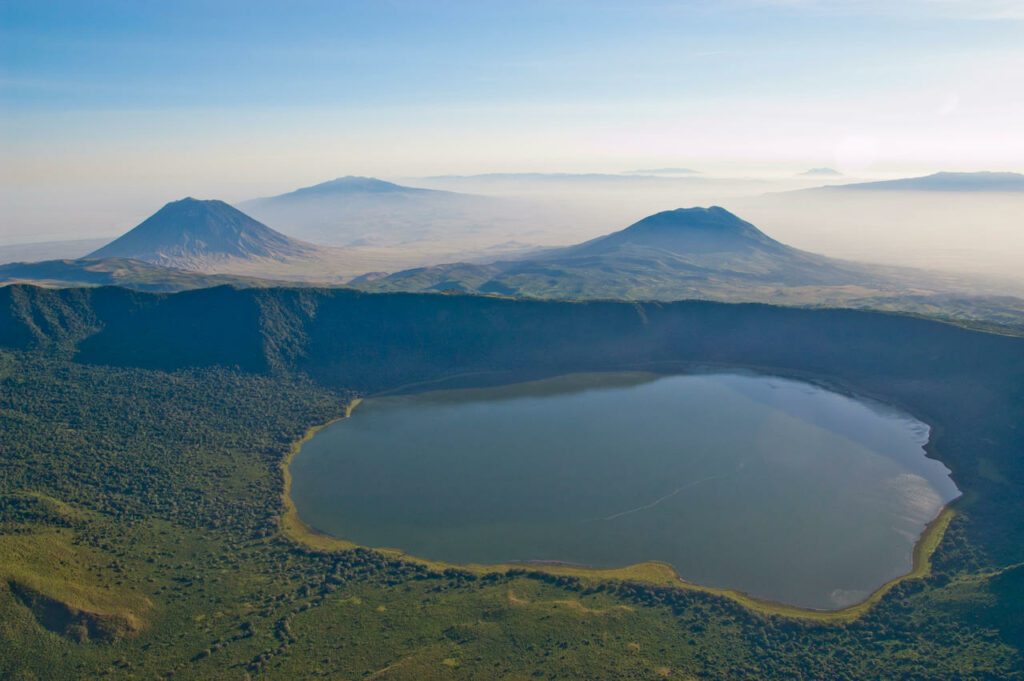
2) Tanzania: The Ngorongoro Crater
The Ngorongoro Crater is an extraordinary natural wonder that’s a part of the Ngorongoro Conservation Area—a UNESCO World Heritage site. The 25km wide volcanic bowl of the crater is a truly unique ecosystem with unparalleled landscapes. You can traverse the floor of the collapsed caldera, encircled by the towering walls of the volcano rim that rises over 600m high—the world’s sixth-largest intact volcanic caldera. It’s no wonder it’s on basically everyone’s Tanzania itinerary. It’s simply stunning and has the feeling of being in a natural amphitheater.
The major downside to the crater is that, unlike almost every other region of Tanzania, it gets extremely crowded. Game drives in the crater can often feel like zoos with lines of vehicles waiting to enter and exit at the gates and masses of people wherever there are animal sightings. Picture eight to 10 vehicles at any given time. This is especially true between June and October. Game sightings are excellent in the crater and it’s very beautiful, but during a normal year, it’s best to visit in the off-season to avoid the crowds. For us, what makes Africa so special are the wide-open spaces and the expansive wilderness. In normal times you just don’t get that at the crater. Right now the crater is fairly empty and it’s the perfect time to plan a visit. By design, safaris are open-air holidays, so we’re confident this is a top choice for 2022 travel.
The nutrient-rich grasses draw 25,000 larger animals—arguably the densest concentration of wildlife on the planet—including 115 mammals. You’ll find black-maned lion and black rhino, pink flamingos, ostrich, leopards, zebras, elephants, wildebeest, buffalo, hyena, 100 species of birds. The game viewing is phenomenal. During The Great Migration, millions of wildebeest come through Ngorongoro, creating a cinematic showdown of predator and prey.
You can’t sleep inside the crater itself, but you can explore it on a day-trip game drive from properties located either on the crater rim or a little farther away in the lush highlands. Usually, we’d recommend one or two days here—maximum—because of the crowds. But since it’s so quiet right now, we’d recommend spending at least a few days here since the game viewing is truly unparalleled. Also, you’re highly likely to have some wildlife and the best picnic spots all to yourself.
So what’s it like to travel during the pandemic to Tanzania? Currently, Tanzania requires a rapid test on arrival ($10 per test). You’ll also need to have a Traveller Surveillance Form filled out within 24 hours of arrival. Travelers will receive a confirmation code, including a Unique Health Code, to be presented during primary screening upon arrival.
Our favorite places to stay around the crater:
Entamanu Ngorongoro: Overlooking Tanzania’s iconic Ngorongoro Crater sits Entamanu Ngorongoro. Nestled in the Acacia Lahai trees and lush green vegetation, the hotel is part of this pristine environment with uninterrupted views of wilderness. Designed as an eco-friendly lodge, the structure has zero footprint.
Ngorongoro Crater Lodge: The Ngorongoro Crater Lodge is a luxury property that’s perched on the edge of the Ngorongoro Crater with magnificent views onto the crater floor.
Lemala Ngorongoro Tented Camp: Lemala Ngorongoro is intimately set in a delightful ancient acacia forest close to the rim of the magnificent crater. As it is located next to the quiet Lemala crater access road on the eastern side, a key advantage of staying here is the quick and easy drive down to the crater floor in the morning.
Gibb’s Farm: Located in Northern Tanzania, in Karatu, just 30 minutes from the Manyara Airstrip. It is situated between Lake Manyara and the Ngorongoro Crater and provides stunning vistas over the Great Rift Valley and the Ngorongoro Forest.
Suggested Itineraries:
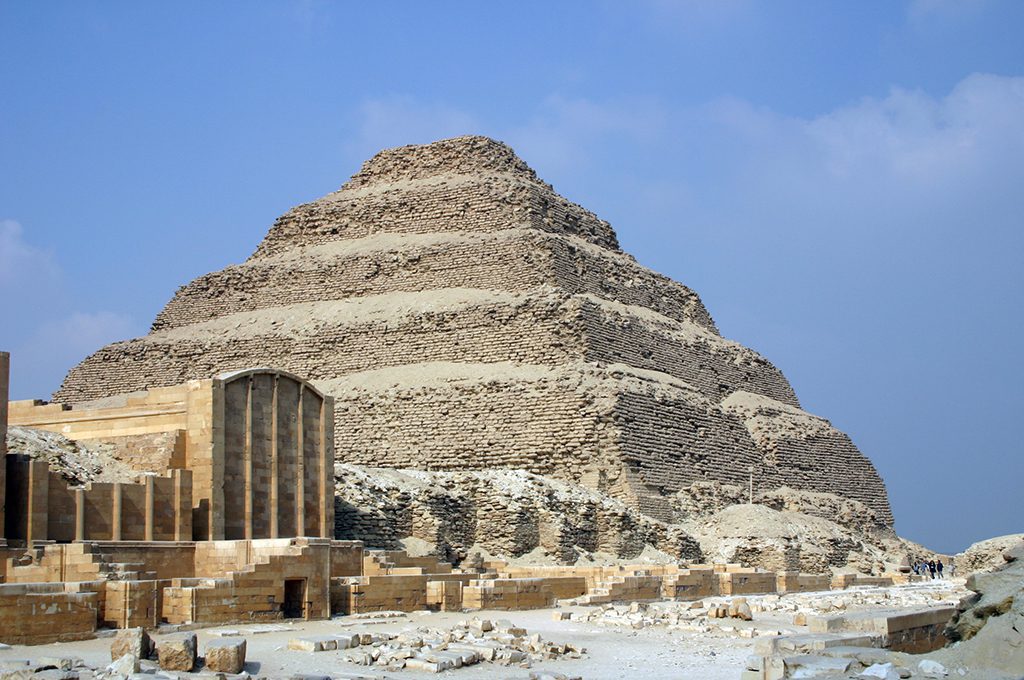
3) Egypt: The Pyramids of Giza
Who doesn’t have a visit to the Great Pyramids of Giza on their ultimate travel to-do list? After years of unrest, in 2019 things felt stable and Egypt saw 1.6 million tourists. Numbers in 2020 were expected to exceed 15 million. Instead, the wonders were deserted during the height of COVID-19—and still are—although the ancient site reopened in July 2021 with strict temperature checks and social distancing measures in place, the crowds are not there.
Tourism accounts for more than 12 per cent of Egypt’s gross domestic product (GDP), according to tourism and Antiquities Minister Khaled el-Anany, so they are happily working hard to welcome back travelers. Huge clean-up operations happened around the pyramids, and the tourism industry is re-looking at how to create a better experience for visitors to the once overcrowded spot.
Giza, while technically a separate administrative district, is part of the sprawling urban city of Cairo. The area is most famous as the location of the Giza Plateau: the site of some of the most impressive ancient monuments in the world. Although there are over a hundred pyramids in Egypt, by far the most famous are the Pyramids at Giza. During the Greek and Roman eras, they were marveled at as the first of the Seven Wonders of the World, and they still exert a powerful fascination, both as an extraordinary technical achievement and as a demonstration of the might, power, and ambition of Egypt’s pharaonic rulers.
Being the most famous means they are also the most crowded and can be seen as a tourist trap. Yet no tour of Egypt would be complete without a visit to this extraordinary site which has inspired the most fantastic legends since ancient times and continues to fascinate and inspire visitors. Right now is the time to check them off your list with minimal crowds, recent renovations, and clean-ups.
The Grand Egyptian Museum—the largest archaeological museum in the world—estimated to open before the end of the year (with an aim for November 2021). It is located just outside of Cairo on the Giza Plateau, and next door to the pyramids. It will display, and preserve some of the world’s greatest ancient treasures, so be sure to tack it onto your itinerary—you’ll be one of the museum’s first guests.
Our sales specialist Jenny visited Egypt in 2019 and her biggest advice is to take your time and truly soak in the mythical magic as well as the historical gravity. The Egyptologist guides we work with are in a league of their own, and know how to get you away from the crowds for a more intimate experience. “Slow down. Soak it in. That’s where the real magic is.”
Arrivals into Egypt—including Egyptians returning home—must provide a negative PCR test with a nasal swab taken within 72 hours from their first point of departure. Unless you’re fully vaccinated, then no test is required. This is extended to 96 hours for arrivals from Japan, China, Thailand, North America, South America, Canada, London, Paris, and Frankfurt. The test result must be printed (digital not accepted), written in English and Arabic and be stamped by an accredited laboratory. All traveller must also complete a personal monitoring card and show proof of health insurance upon arrival.
Our favorite places to stay near Giza:
Four Seasons Hotel Cairo at Nile Plaza: Stay in the heart of Cairo, with views of the Great Pyramids, and ancient zoological and botanical gardens just outside your door. At the luxury Cairo hotel, enjoy fine dining and opulent lounging spaces. In nearby Giza, take in the best of the city’s arts, culture and shopping.
Marriott Mena House: The Mena House has its own rich and colorful history. Surrounded by 40 acres of verdant green gardens, this palatial hotel is located in the shadows of the Great Pyramids of Giza in Cairo.
Suggested Itineraries:

4) Ecuador: Galapagos Islands
The Galapagos Islands are simply otherworldly, and offer some of the most unique wildlife experiences you can have. Few destinations offer such up-close-and-personal wildlife encounters and unique flora and fauna that’s found nowhere else on the planet. From giant tortoise roaming the islands, to inquisitive sea lions lounging around town and underwater and hammerhead sharks below the surface, and spikey marine iguanas basking in the Ecuadorian sunshine—the archipelago, lying nearly 600 miles west of Ecuador’s mainland, comprises 13 major islands, six minor islands, and a number of small islets.
The volcanic islands are a UNESCO World Heritage Site and 97 per cent of the area is heavily protected National Park. For visitors, this means walking only on set trails, at certain times, and accompanied by a guide in an effort to conserve this incredible ecosystem.
This is another destination that you typically need to book at least one year in advance because it’s popular and gets booked up early. With so many cruises and boats stopping in on the islands each day, it’s a real boon to have some of these beaches and wildlife to yourself right now. We say there’s probably never been a better time to visit.
Discovered in the 1500’s, and uninhabited until the early 1800’s, the islands of Baltra, Floreana, Isabela, San Cristobal and Santa Cruz are now populated by a combined 25,000 people. But visitors from far and wide are not visiting for the people—they flock to these islands to see the unique flora and fauna. The natural history of the Galapagos Islands has fascinated visitors since their most famous guest landed there in 1845. Darwin’s observations during his voyage on the HMS Beagle laid the foundation for a theory that greatly impacted western thought—the theory of evolution.
On the islands, 100 per cent of the population over 18 is vaccinated. All travelers over two-years-old, whether vaccinated or not, are required to present a negative PCR test certificate taken within 72 hours of the flight. When entering the Galapagos, travelers can show the same certificate used to enter Ecuador, as long as it was taken within 72 hours of their Galapagos flight, or one from an authorized Ecuadorian laboratory. A Galapagos Transit Control Card will need to be completed online or at the airport before the flight. A travel insurance certificate is required. Everyone who travels during the pandemic to Ecuador is required to comply with social distancing regulations and wear face masks throughout their stay.
Suggested Itineraries:
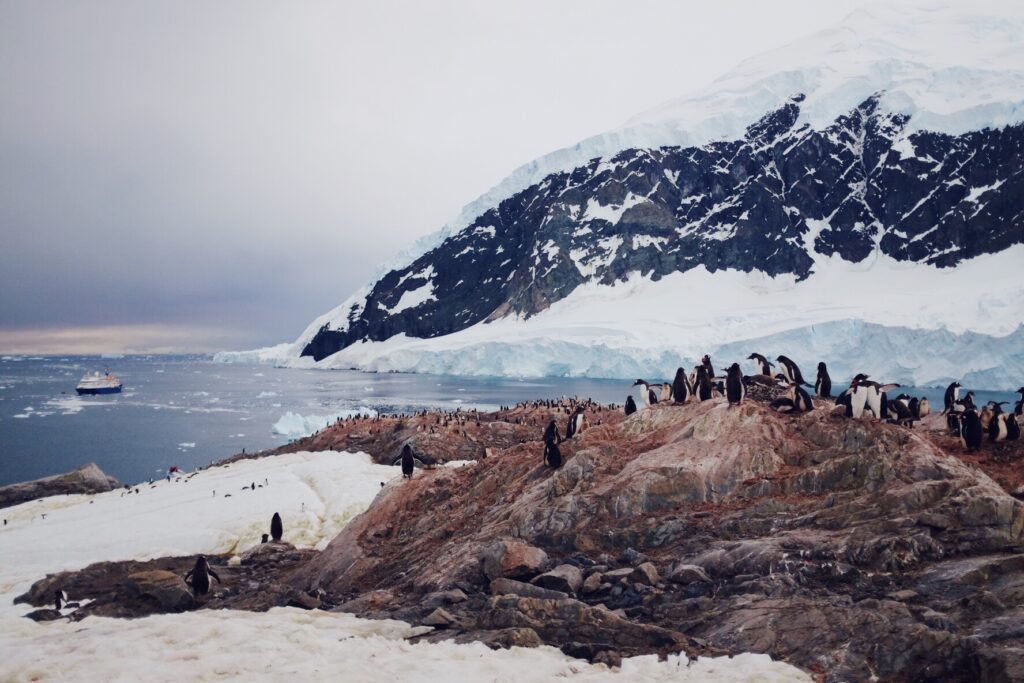
5) Antarctica
If there’s one destination that’s surely free of COVID-19—it’s Antarctica, the last untouched wilderness on earth. You come to Antarctica for the unrivaled wildlife viewing, or maybe to check that seventh continent off your list—but what you quickly realize is it’s the unparalleled remoteness, the solitude, the deafening silence, and see what the planet looks like untouched. That’s what makes Antarctica the most magical journey you’ll ever take. It’s the perfect place to socially distance, by nature.
Full of dramatic landscapes and seascapes, the landmass of Antarctica—averaging around 8000 feet in elevation—is surrounded by water. Kayak amongst towering giant glaciers and turquoise icebergs, camp on the continent itself, hike in untouched places, visit scientific research bases, waddle with penguins, and if you’re daring enough—take a dip into the Southern Ocean, you never know when a humpback might pay you a visit.
All cruises last season, from November 2020-March 2021, were postponed due to the pandemic. The majority of affected guests have been rescheduled to the upcoming 2021-2022 season—so grabbing a last-minute spot, or planning for next year is the way to go. Once a remote destination that only true explorers could reach, the White Continent is now more accessible and an endangered place to visit responsibly, soon, before it changes due to global warming.
Antarctica itself does not have any COVID-19 travel restrictions or entry requirements—so it’s an ideal place to travel during the pandemic. But since tours start from Argentina and Chile, travelers must abide by those country’s restrictions. The town of Punta Arenas at the tip of Chilean Patagonia is the launch point for flights to the Antarctic Peninsula. Most cruises depart from Ushuaia, Argentina, the southernmost city in the world next to Tierra Del Fuego, home to some of the most unique hiking and wildlife in Patagonia.
Argentina opened its doors to neighboring countries on October 1, 2021 and will open to the US and the rest of the world on November 1, 2021. All travelers require proof of COVID-19 full vaccination, as well as a negative PCR test result from a test taken within 72 hours before arrival, or an antigen test upon arrival. Travelers also require a PCR test on days five to seven after arrival. Foreigners without a complete vaccination scheme (including minors) must perform quarantine, antigen test upon arrival, and PCR test on day seven. As of October 1, 2021, fully vaccinated travelers from all over the world are welcome to Chile for tourism. A negative PCR, taken 72 hours before departure will also be required. You also must fill out the “Affidavit for Travelers” form online before arrival. Anyone entering Chile must remain in mandatory isolation for five days, and you must have medical insurance with a minimum coverage of USD 30,000, which covers any expenses caused by COVID-19.
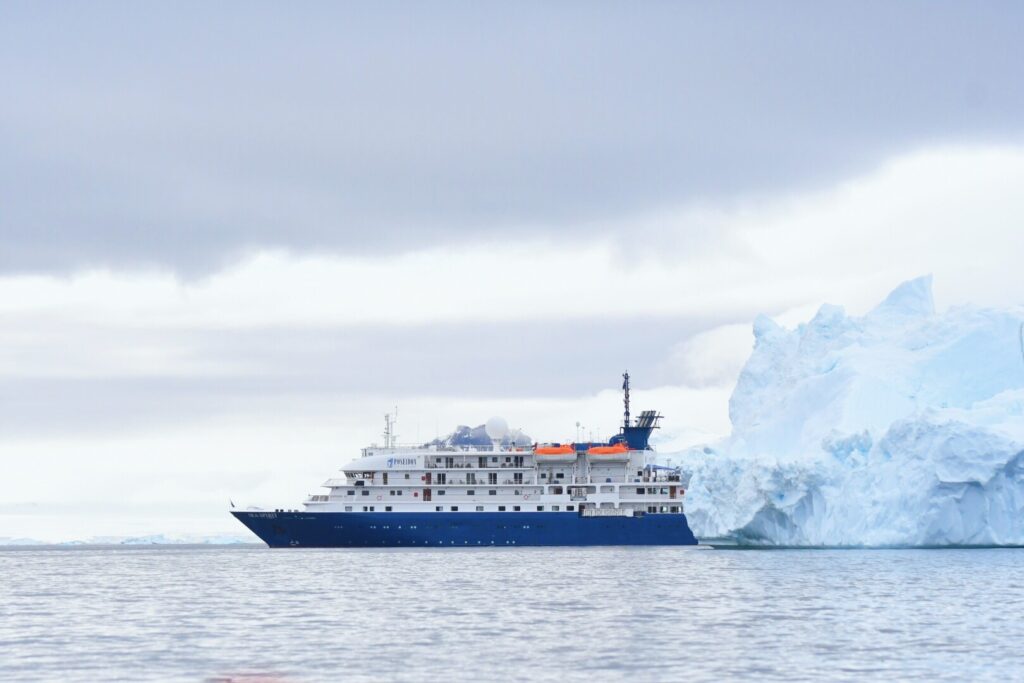
Suggested Itineraries:

6) Machu Picchu, Peru
One of the best things about traveling during COVID-19 is seeing how excited locals are to welcome back guests, and in the case of Machu Picchu, right now the tourism industry is striking the perfect balance on both ends—tourists are trickling back in, but the crowds that once plagued the ancient site of magnificent human achievement at Machu Picchu are simply no longer there. Travelling here now means that you can walk around without any crowds in sight, while supporting the local economy as they are starting to get their tourism revenue back.
Like most places in the world, Machu Picchu was closed all throughout 2020, but it reopened in November 2021. Some of the new safety protocols implemented then are likely here to stay, including mandatory mask-wearing, restrictions on group sizes (no more than nine people, including a guide) and making it essential for groups to stay at least 20 meters apart. There’s also a new ticketing system, limiting the number of visitors per day and for how long. In this case, we still recommend booking tickets one or two months in advance.
Discover the mystical beauty of Machu Picchu, the crown jewel of the Inca Empire and a must for most travelers. Machu Picchu, meaning “Old Mountain,” is one of the 7 New Wonders of the World. Explore the Sacred Inca citadel, including its main temples and hidden corners. Hiking is available to those who want to walk a part of the Inca Trail, following in the footsteps of the Empire from over 500 years past. Admire views of the Lost City and the mountains and valleys beyond.
If you’re feeling adventurous, opt for a multi-day trek to the celebrated citadel along the Inca Trail or Salkantay. For serious trekkers with more time, include a trek to Choquequirao; or continue north to the Cordillera Blanca, a rigorous route through the world’s highest tropical mountain range. Or maybe you’re up for lodge to lodge hiking adventure through a historic section of Inca Trail spanning 15 different eco-systems—along the way you can explore villages where locals still maintain age-old traditions.
Travelers must have proof of a negative COVID-19 PCR or antigen test taken at most 72 hours before departure for Peru, or a medical certificate of epidemiological discharge. An Electronic Health Affidavit and Geolocation authorization form must filled-out and signed, and is available upon airline ticket purchase. Once you’re at the airport, everyone is required to use a surgical mask at all times. While you’re in Peru, a face mask is required everywhere in public. Note: Entry remains suspended to non-residents with travel history in India, Brazil and/or South Africa in the past 14 days.
Suggested Itineraries:
Plan Your 2022 Adventure Today
Ready to start planning your own incredible adventure for the new year? We make the process stress-free and enjoyable. Call or email us today to explore your best options for a journey you’ll never forget!
Then, start packing that suitcase because we’ve got all the details covered.
Plan your Trip
Ready to start planning your own incredible adventure? We make the process stress-free and enjoyable.
